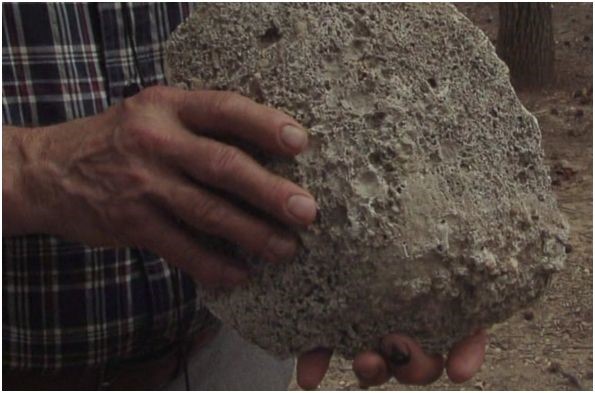The Plaster Casts of the landing marks made by Jim Penniston's the morning after the incident. In two recent UFO documentaries ("UFO Invasion At Rendlesham" & "Britain's Roswell") witness, Jim Penniston, displayed one of the plaster casts which he made of the landing marks. Three identical indentations in the shape of an equilateral triangle on the forest's floor were discovered after the initial event on the 25/26 December 1980. They were found in the same area where the Craft of Unknown Origin was sighted, so the witnesses assumed they were 'landing marks' left by the object. Jim Penniston visited the landing site later on in the morning and took three plaster casts of the landing traces.
The three indentations were equally 9.8 feet apart forming a perfect triangle. The same shape of the craft Jim recorded in his notebook while conducting a 45 minute investigation of the craft which included numerous photographs. The photographs were dropped off at the base photo lab by Jim. He was notified by the base photo lab that all of the pictures were fogged, meaning nothing was on the roll of film.






